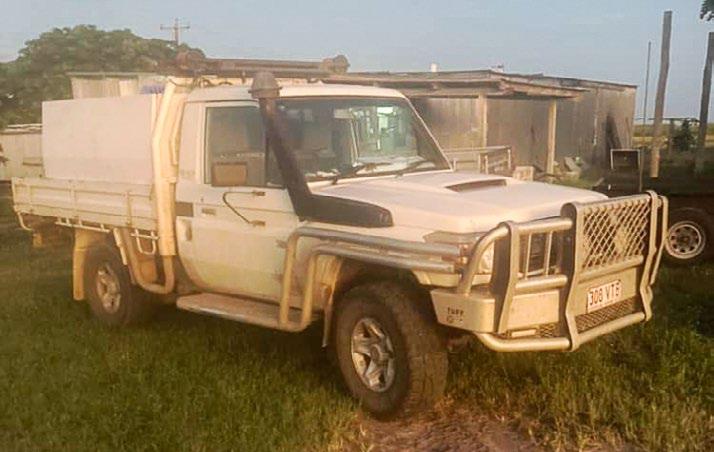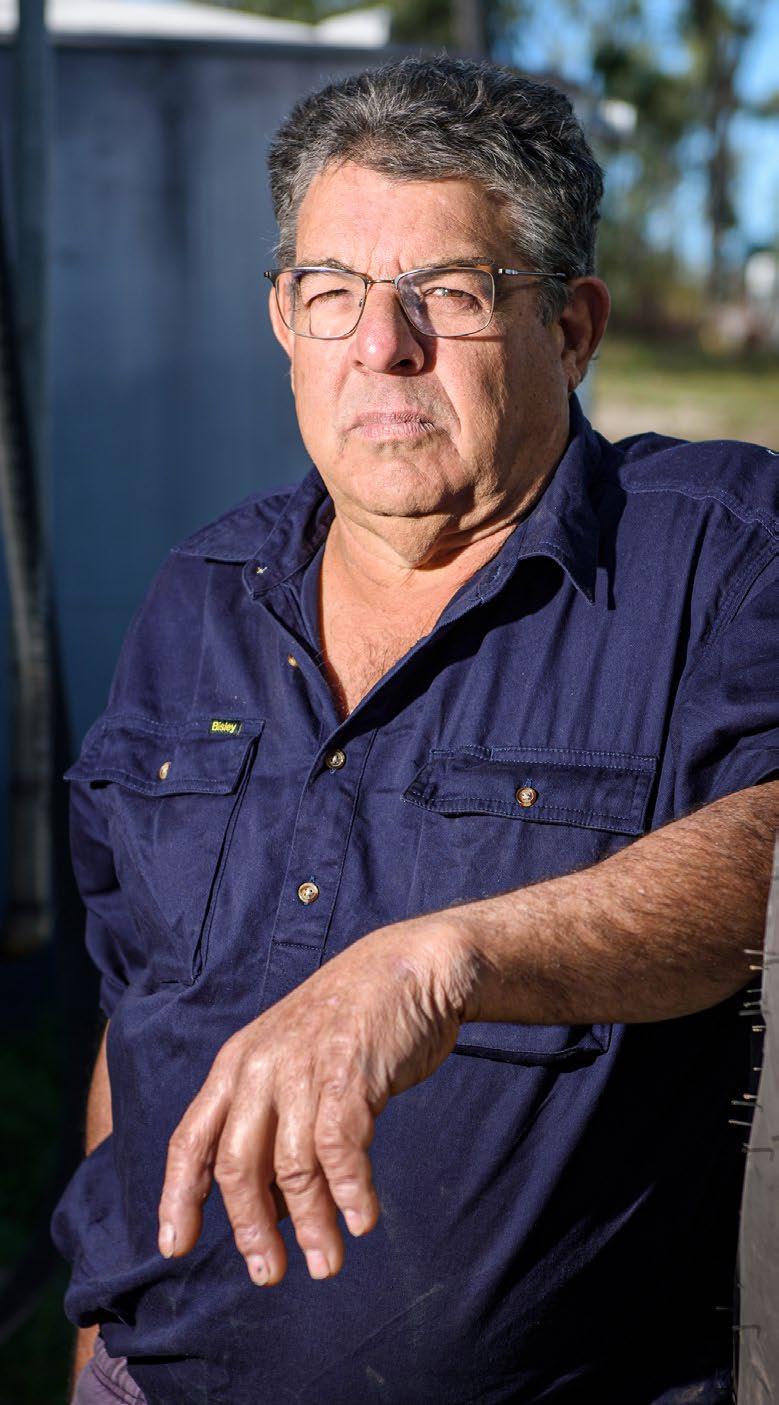
6 minute read
DAYLIGHT ROBBERY
Rural property owners are being urged to be on guard amid increased theft rates across Queensland.
Ryan Dingle counts himself as unlucky, having been the victim of thieves twice in the past year. The Bundaberg cane grower and contracting business owner was first hit late in 2022 when a tool truck was broken into in broad daylight.
“It was on a Sunday lunchtime in open conditions,” Ryan said. “You could have seen it from multiple roadways. The driver of the truck left it when he went to get a tractor from a nearby paddock and came back to find it had been broken into.
They stole about $40,000 worth of tools
The second incident occurred in late April when a Landcruiser was taken, again during daylight hours. “The operator was working on a corporate farm and he had the vehicle locked on a pad,” Ryan said. “He was working just down the road and someone must have been watching him. They took the Landcruiser, along with thousands of dollars’ worth of tools and fuel.”
The vehicle has since been recovered, although it was modified. Toolboxes and the fuel tank had been removed, the white body had been repainted a matte black and the bull bar had been turned into a bumper bar. The fuel and tools remain missing.
Chairman Kevin Borg has also been a victim, targeted by thieves around Christmas time.
“Our shed was locked up but they broke into the shed by cutting the mesh off the windows,” he said. “They took a lot of power tools worth a lot of money, especially the battery-operated power tools, Milwaukee tools appear to be their main target. There was fuel taken, by cutting the lock on a fuel tank.”
“We were about three months without tools before we were able to finalise an insurance claim. I guess a lesson to be learned is that when you come to make an insurance claim if you don’t have evidence of ownership, it’s an argument and a half to get a payout. Invoices or photos make it much easier.
To wake up and find you’ve been broken into, it’s an eerie, scary feeling
CANEGROWERS Mackay fought hard for us, if it wasn’t for Geoff Youngs and his insurance team we might not have got the full payout.”
Kevin has now increased his security, including the installation of alarms and cameras but acknowledges this is all at an extra cost.
Property offences across Queensland have been steadily rising since theft and burglary rates hit a low during the covid-19 national lockdown in 2020. The statistics show around 25,000 offences are being reported statewide each month. Unlawful entry, unlawful use of a motor vehicle and ‘other’ theft were all substantially higher in 2021/22 when compared with 2020/21. Townsville, Cairns, Central Queensland and the Mackay-IsaacWhitsunday regions all had higher per capita crime rates than the state average. Figures for this year show the number of property offences remains elevated.
A police spokesperson told Australian Canegrower many of the incidents are opportunistic. “Thieves will usually act on easy or tempting opportunities, especially when it is evident no one is home or the risk of being caught is low,” they said.

Rural property owners should also be locking all property gates and fuel containers, and regularly checking fencing
“It is essential rural property owners regularly check items on their properties that can be stolen, such as tools, machinery and fuel. Ensure these items are locked away and out of sight.
“Further measures include the installation of security cameras, sensor lights, security screen doors and alarms.”
Police are also urging property owners to be wary of unfamiliar vehicles. “If you find a suspicious vehicle on your property, do not approach the vehicle or offenders and call police immediately,” they said. “If possible, record the vehicle's registration numbers and any description of offenders. This will greatly help police investigate the matter.”
While the statewide property crime figures include both metro and rural/regional areas, the types of vehicles most commonly being stolen add to the warnings for growers. According to motoring body RACQ, the Toyota Landcruiser has topped the list since 2021. The Toyota Hilux has also been in the top three consistently.
“There's no definitive answer as to why these models are the most commonly stolen,” a spokesperson said. “They are some of the top selling vehicles so there is more of them around to steal.
Previous research from the National Motor Vehicle Theft Reduction Council found the majority of cars are stolen for short term purposes - this may include joyriding, as a temporary means of transport, or for use in the commission of another crime - and isn’t necessarily linked to the vehicle's value. As vehicle security improves, the easiest way to steal a car is to use the keys, so drivers need to be extra mindful about where they store their keys.”
Further advice includes avoiding tagging keys with identifying information such as names or addresses and where possible parking in a garage or gated driveway.
MILLS TARGETED
Five burglaries at Wilmar Sugar’s Macknade and Victoria mills have netted thieves $60,000 worth of stolen property.
In early May, electrical cable valued at $10,000 was taken from the Victoria Mill. Police say the thieves returned later that month and stole more cable to a similar value. On 31 May, the same product was stolen from Macknade Mill. This was followed by two more incidents at Victoria Mill, with cable worth a combined $30,000 taken.
The same two vehicles – thought to be a white Toyota Landcruiser and a silver Nissan Navarawere spotted in the vicinities of the mills at the time of the thefts.
YOUR VOICE MATTERS IN ADDRESSING FARM CRIME
One of the primary problems facing rural communities is incidents of crime that impact the function of pastoral, agricultural and aquaculture farming operations. To address this issue, the UNE Centre for Rural Criminology is undertaking a survey on farm crime in Australia.
They need valuable information from those involved in farming who have key insights into the important issues. Have your say in improving the safety and well-being of rural farming communities!










